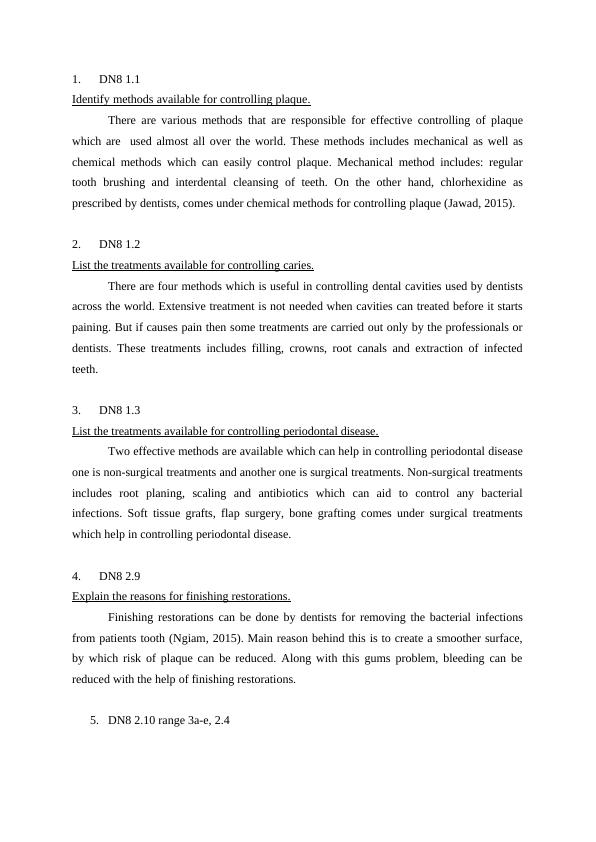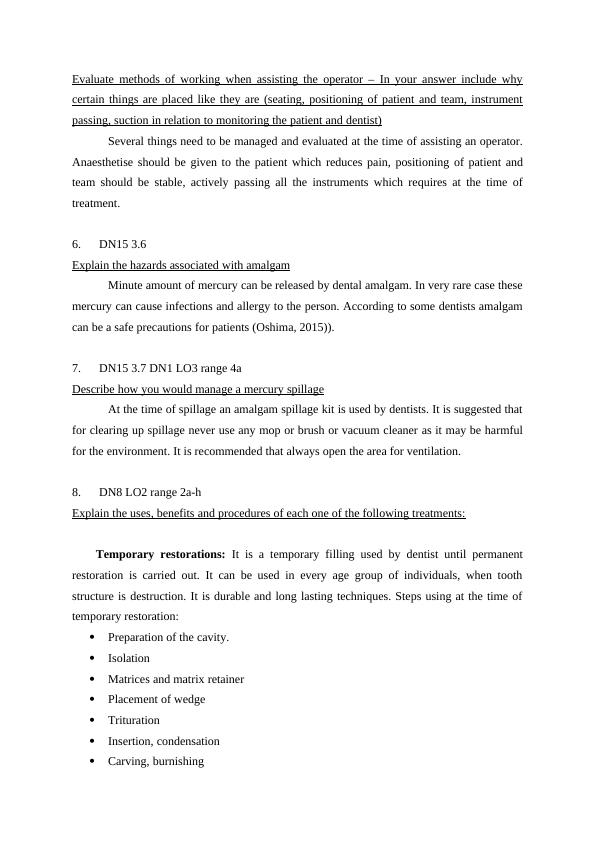Ask a question from expert
Mechanical and Chemical control of plaque
4 Pages1002 Words340 Views
Added on 2020-12-09
Mechanical and Chemical control of plaque
Added on 2020-12-09
BookmarkShareRelated Documents
End of preview
Want to access all the pages? Upload your documents or become a member.
Assignment on Amalgam PDF
|4
|1038
|94
Mechanical and Chemical Plaque Control
|7
|1279
|90
DN15
|6
|1753
|62
Oral and Dental Diseases : Assignment
|9
|2894
|230
Methods for Controlling Plaque, Treatments for Caries and Periodontal Disease, Sources of Fluoride, Aspiration Methods, Reasons for Finishing Restorations
|8
|1124
|73
Prevention and Control of Periodontal Disease: Support and Methods
|17
|4004
|182

